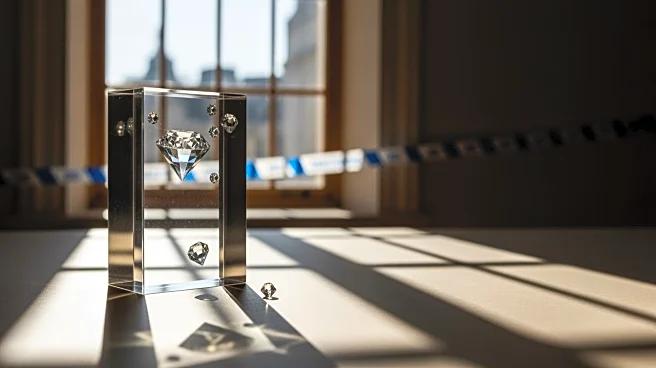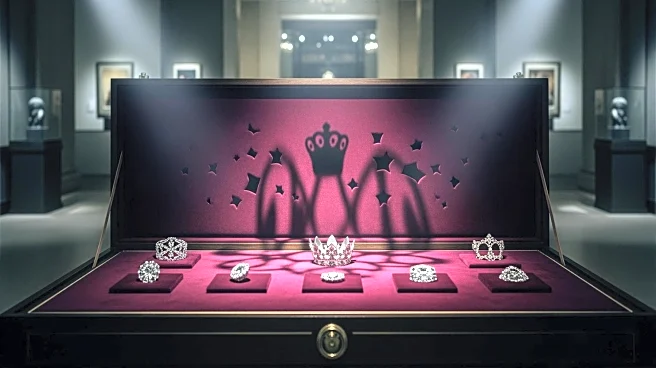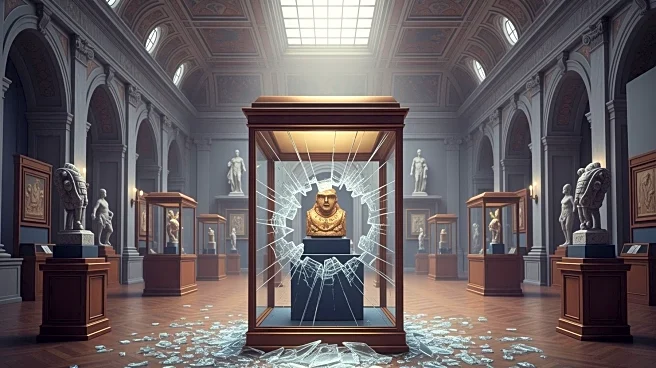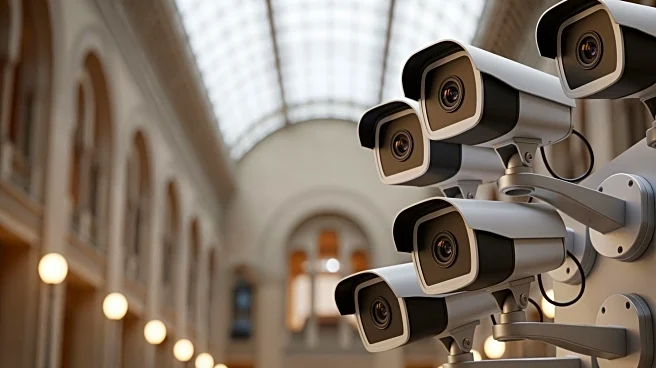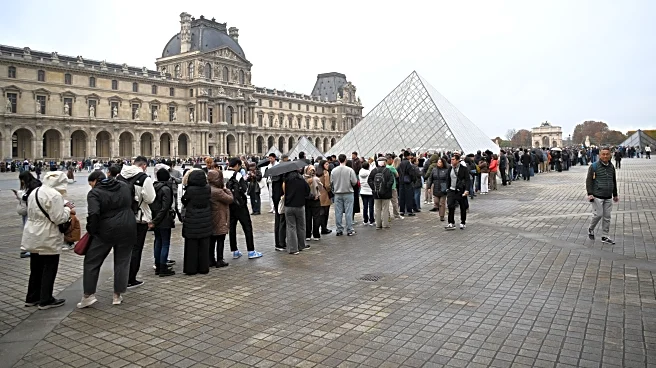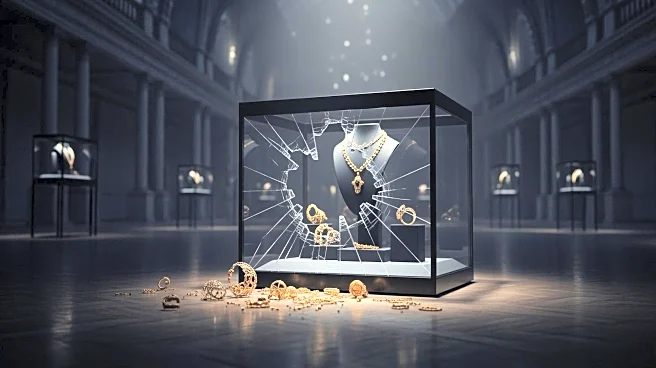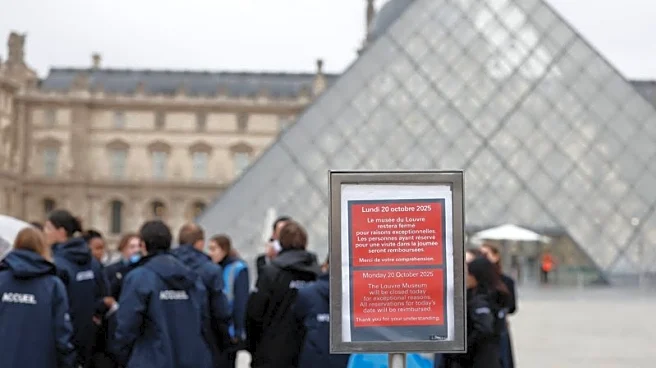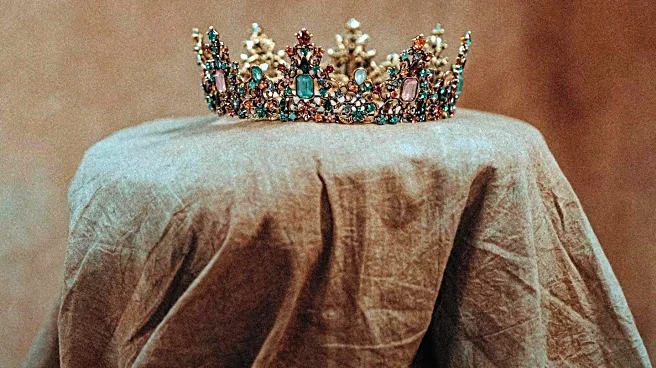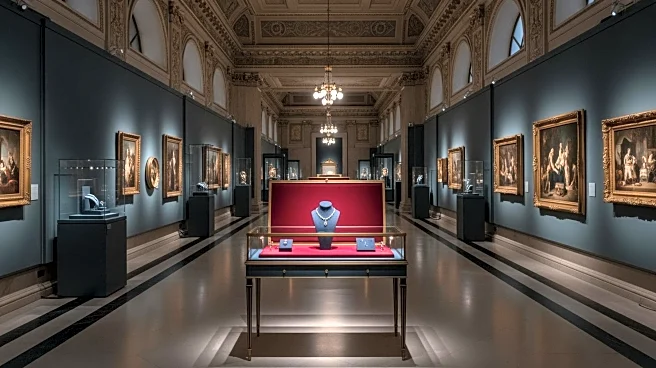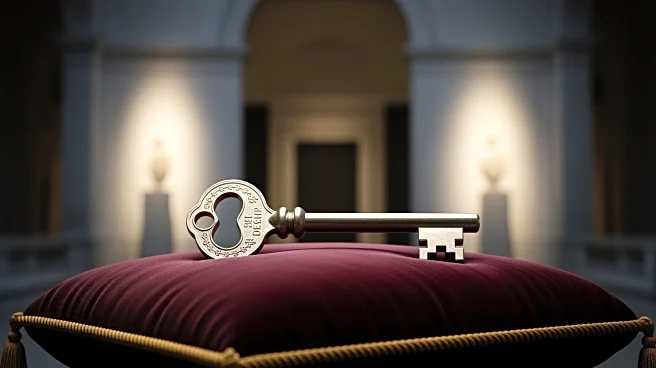What's Happening?
The Louvre Museum in Paris was the target of a high-profile theft over the weekend, where thieves made off with nine priceless items from the Galerie d’Apollon. The robbery occurred at approximately 9:30
a.m. CET on Sunday, involving two individuals who used power tools and a truck-mounted crane lift to gain entry through a window. The stolen items include a necklace and earrings gifted by Napoleon to Empress Marie-Louise, as well as pieces from the collections of Queen Marie-Amélie and Empress Eugénie. French President Emmanuel Macron condemned the theft as an attack on cherished heritage. The incident has drawn comparisons to the infamous 1911 Mona Lisa heist, highlighting ongoing concerns about museum security.
Why It's Important?
The theft of these culturally significant jewels from the Louvre Museum underscores vulnerabilities in the security of major cultural institutions. The stolen items, which are considered national treasures, represent a significant loss to France's cultural heritage. The incident raises questions about the adequacy of current security measures in place to protect such valuable artifacts. The heist could have broader implications for museum security protocols worldwide, prompting institutions to reassess their protective measures. Additionally, the theft may impact the art and jewelry markets, as stolen items of such historical value are difficult to sell without detection.
What's Next?
Authorities are actively investigating the heist, with efforts focused on identifying the perpetrators and recovering the stolen items. The French Ministry of Culture and law enforcement agencies are likely to enhance security measures at the Louvre and other museums to prevent future incidents. The international art community may also increase collaboration to track and recover stolen artifacts. Public and private stakeholders in the art world will be closely monitoring the situation, as the recovery of these items is of paramount importance to preserving cultural heritage.
